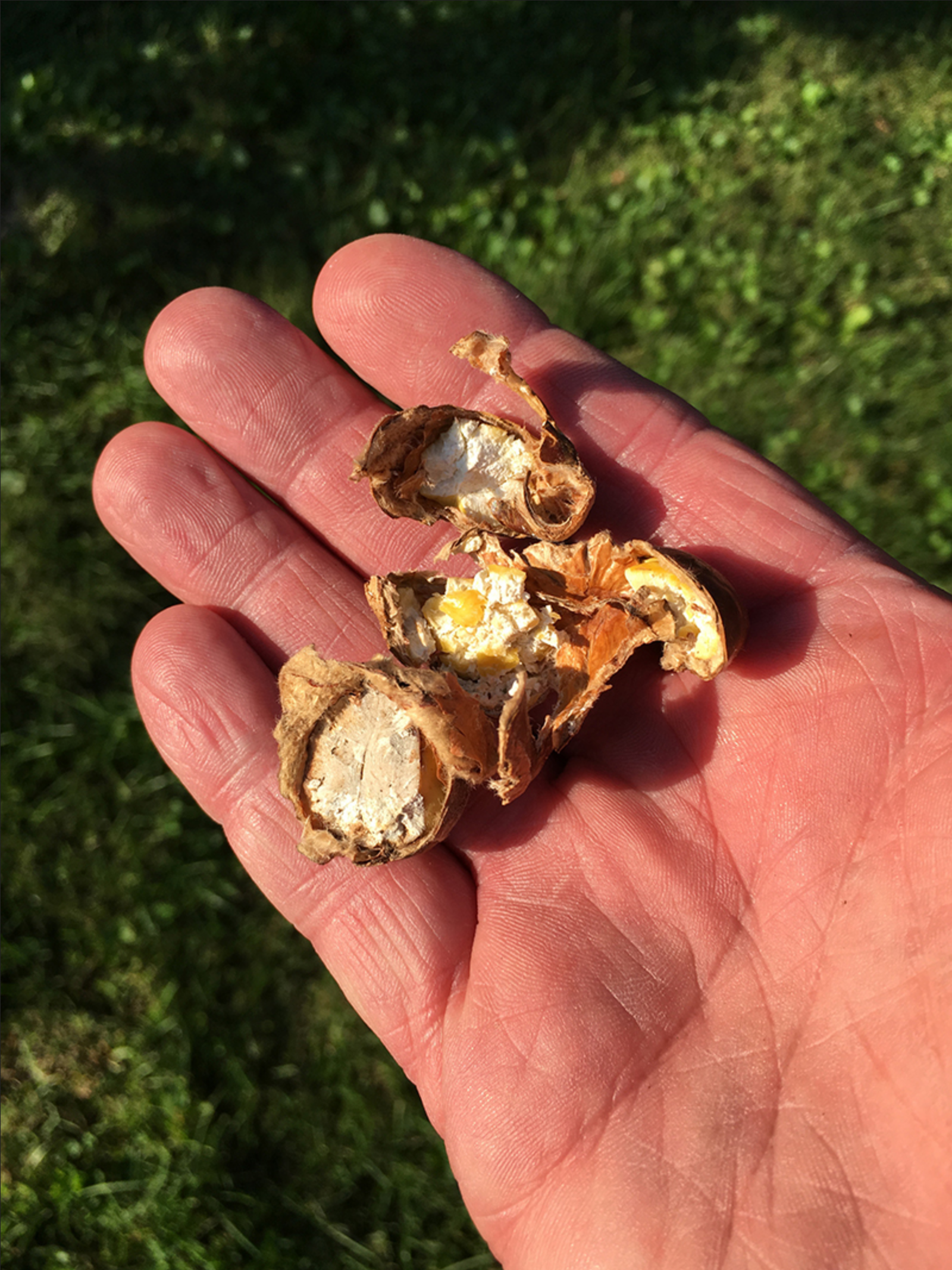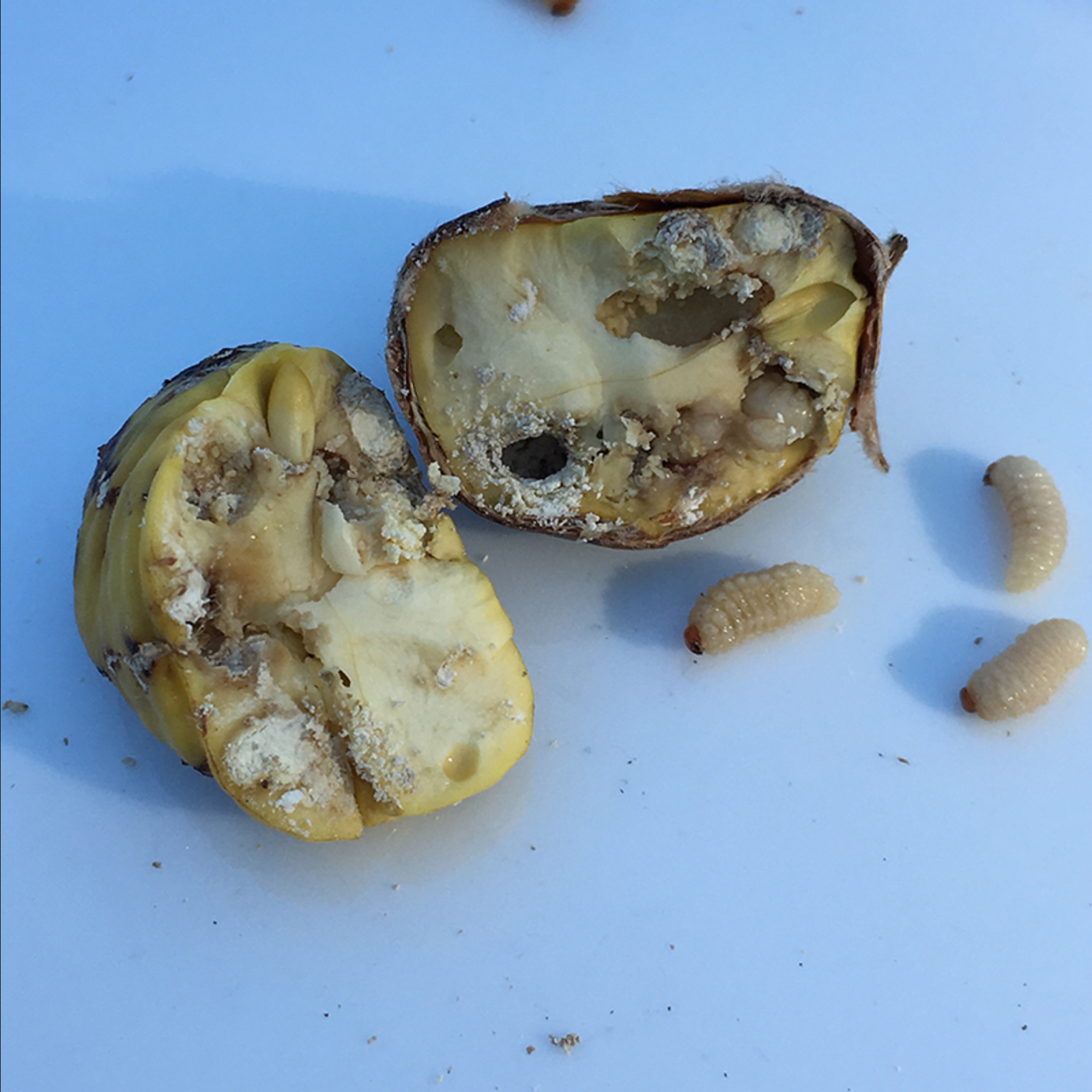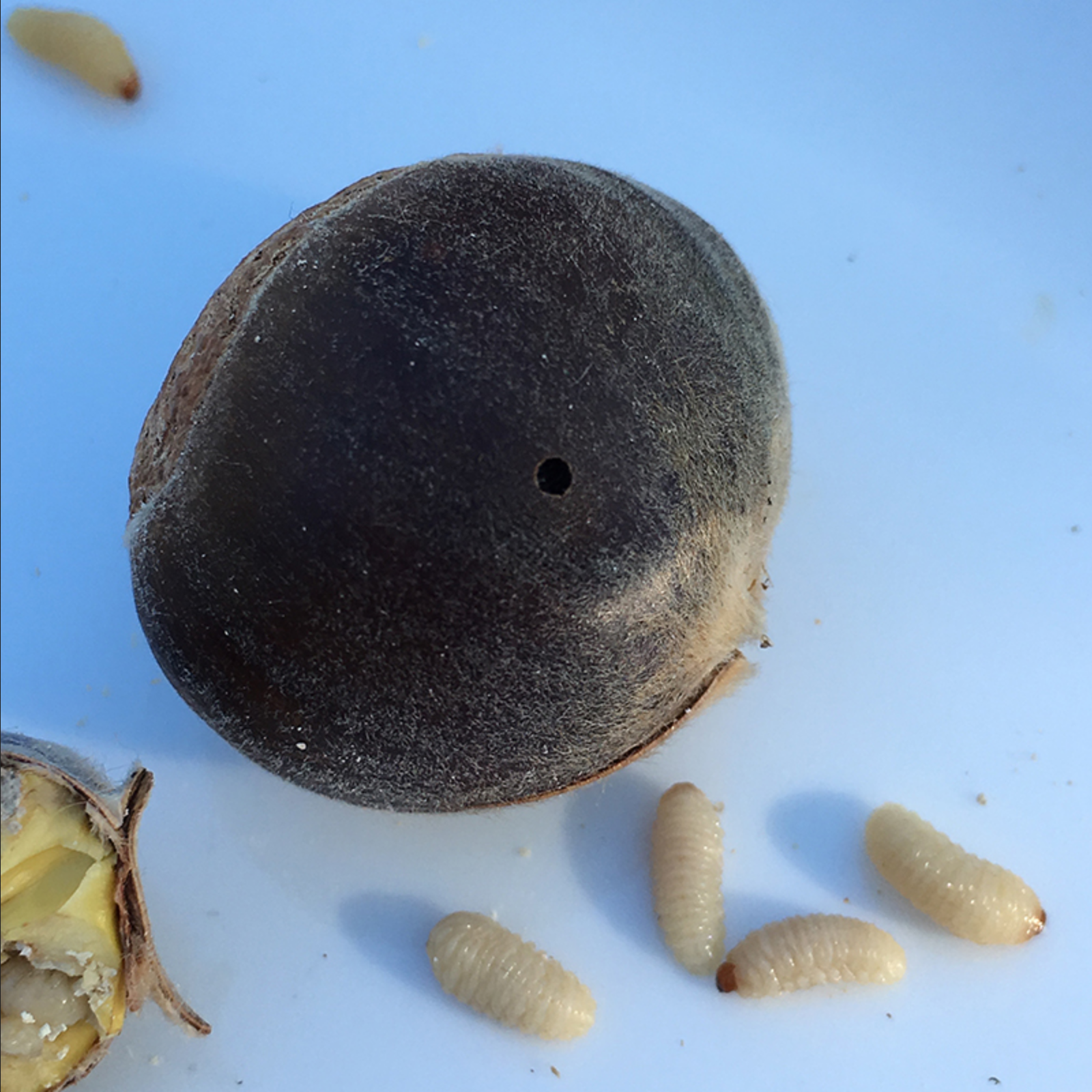picture of the week
October 11, 2021
Chestnut Weevils
Bruce Bordelon-retired, Professor, Department of Horticulture and Landscape Architecture, Purdue University
Chestnut is a popular nut tree for the Midwest. At one time American chestnuts dominated the landscape of eastern North America. Unfortunately, most American chestnuts died due to chestnut blight, caused by the fungus Cryphonectria parasitica. Today most commonly planted chestnuts are hybrids between the Chinese chestnut (Castenea mollissima) and the American chestnut (C. dentata). Chinese chestnut hybrids are generally resistant, but not necessarily immune to blight.
Chestnuts produce abundant crops each year. In early fall the burs of the chestnut tree open to release the nuts (Picture 1). The nuts fall to the ground and are collected (Picture 2). They are a nutritious food for deer, squirrels, and other wildlife (Picture 3). They are also popular food for humans. The first line of The Christmas Song, “Chestnuts roasting on an open fire…Jack Frost nipping at your nose…” is known by many. However, local chestnut roasters may be surprised to find that their nuts are full of worms. These worm are almost certainly the larvae of chestnut weevils.
Click image to enlarge
Two species of weevils pose the greatest risk of injury to a Midwest-grown chestnut crop. These weevils lay eggs inside chestnuts starting in August and continuing until the burs open. Larvae of the chestnut weevil are white, legless grubs that can devour the entire contents of a nut (Picture 4).
Life cycle: Small chestnut weevils (Curculio sayi) emerge from the soil in late May through July. Adults feed on chestnut foliage until nut kernels enter the dough stage in mid to late August. Although they can lay eggs any time after kernel filling, most eggs are laid after the bur begins to open. The female weevil uses her long proboscis to drill a hole through the shell before turning around and placing her ovipositor into the nut and laying five to seven eggs. Eggs hatch in about 10 days and larval development is completed two to three weeks later. Mature larvae chew a small round hole through the shell (Picture 5), exit the nut, and then burrow into the ground under the chestnut tree. The insect remains in the soil for two to three years before re-emerging as an adult.
Click image to enlarge
Large chestnut weevils (C. caryatrypes) emerge from the soil in late July and August. Because of their larger size, large chestnut weevils are more successful in laying eggs in nuts before burs open. The long proboscis of large chestnut weevils enable females to drill ovipostion sites among the spines of the bur. Eggs hatch in five to seven days producing large, legless grubs. The life cycle of the large chestnut weevil is similar to that of its smaller cousin but the larger weevil spends only one to two years in the soil.
Although harvested nuts may appear sound when put into storage, some will soon show obvious signs of infestation. These infestations began while the nut was still on the tree. In our experience with chestnuts at the Horticulture Research Farm, once weevils infest a planting, nearly 100% of the nuts will contain larvae each year.
Management: Weevil damage can be reduced by gathering nuts daily, and heating them to 120ºF for 20 to 30 minutes to kill larvae in the nuts. A cold treatment, holding nuts at 0ºF for four days may be effective, but it may affect the nuts’ flavor. Sanitation can help reduce weevil populations. Collect and destroy fallen, infested nuts before larvae have a chance to escape and enter the soil. Maintaining bare ground or closely mowed grass beneath the trees will aid in finding the nuts and reducing weevil populations. The adult weevils can be scouted and monitored for their presence by jarring the tree and counting fallen weevils. Sevin is the only insecticide registered for chestnuts. Applications have proven effective if applied during the mating and early egg-laying period, from early August to mid-September.
References:
Nut Weevils. University of Kentucky ENTFACT-206 by Ricardo Bessin. https://entomology.ca.uky.edu/ef206






